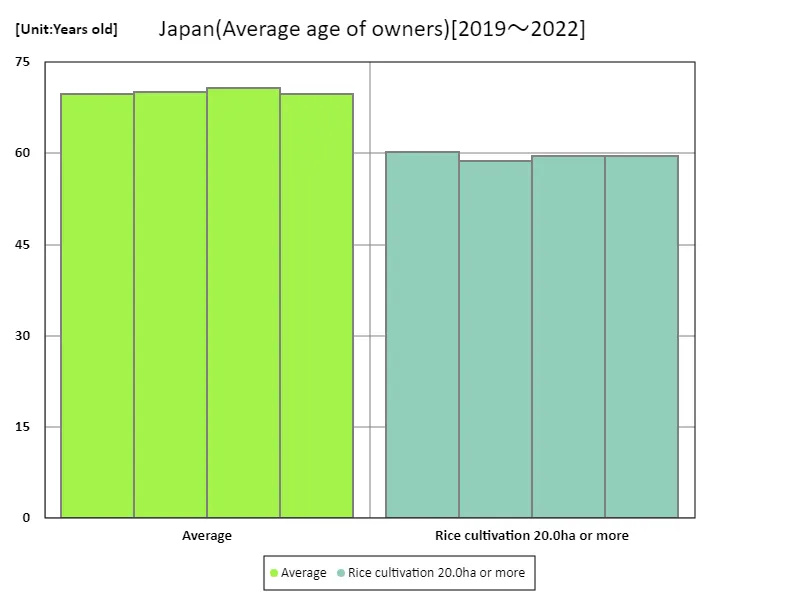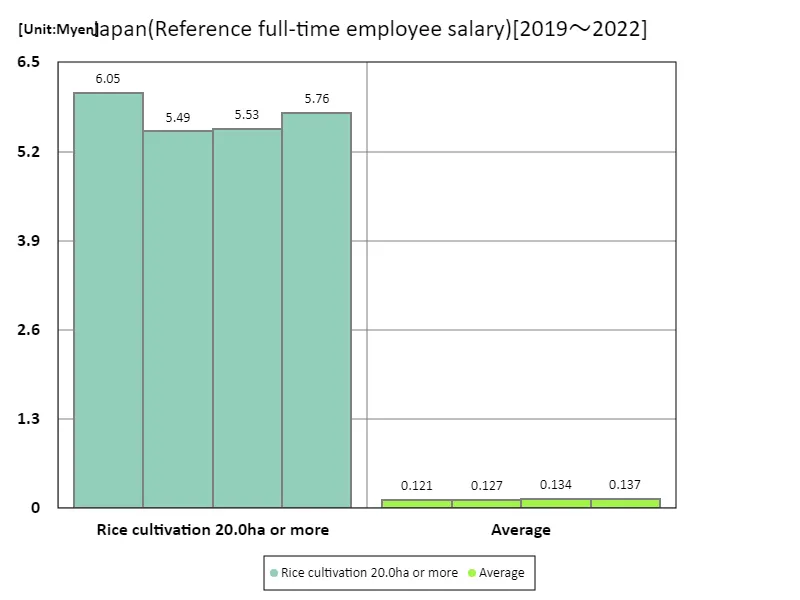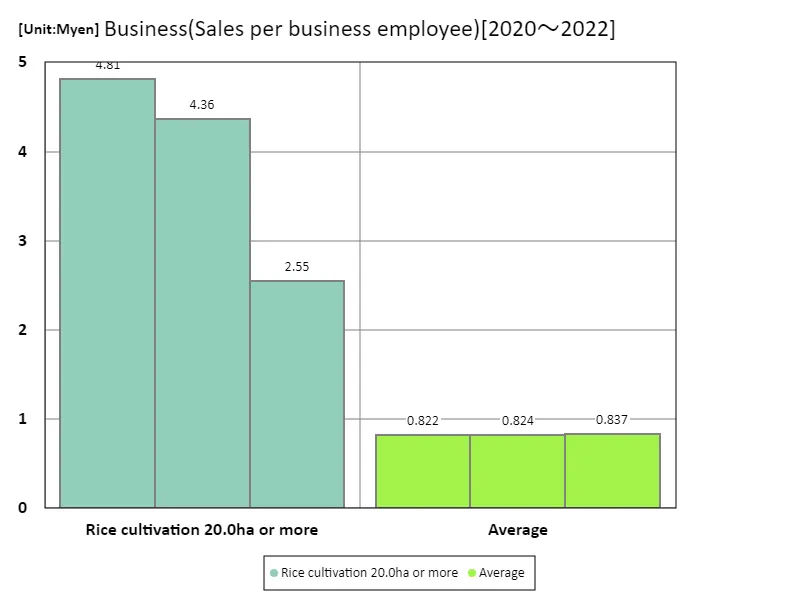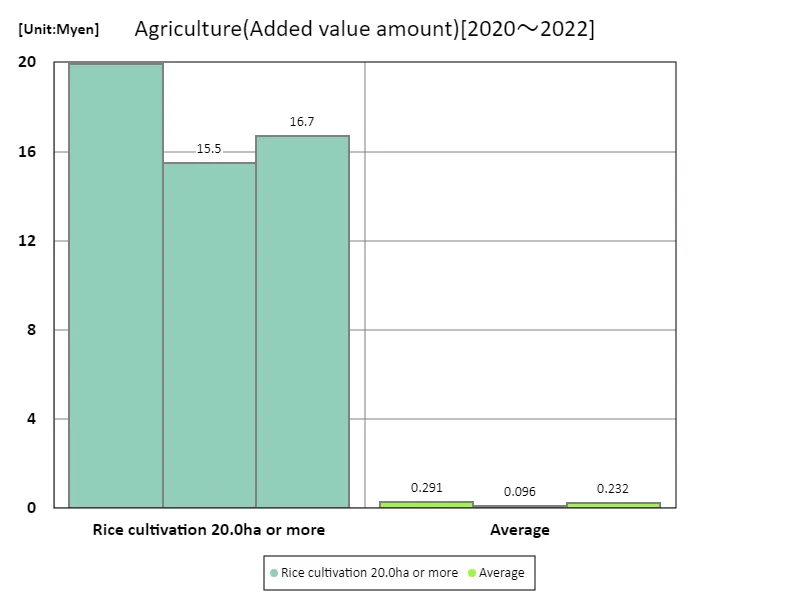Abstract
In 2022, agricultural business owners in Japan continue to face an aging demographic, with the average age of those managing less than 0.5 hectares of paddy fields reaching 71.2 years. This reflects a long-standing trend of an aging rural population, as younger generations often migrate to urban areas for better opportunities. Full-time employees in the agricultural sector earn modest salaries, and sales per business employee remain low compared to other industries. Value-added indicators in agriculture show relatively slow growth, highlighting challenges such as labor shortages, limited technological adoption, and the financial constraints faced by small-scale farmers.
The average age of the business owners
From 2019 to 2022, the average age of agricultural business owners, particularly those managing paddy fields smaller than 0.5 hectares, has steadily increased, peaking at 73 years old in 2021. This aging trend highlights the continuing challenge of a shrinking farming population, as younger generations move away from agriculture for urban opportunities. Despite this, the area of less than 0.5 hectares of rice paddies remains at 97.5% of its peak level, reflecting the persistence of small-scale farming. However, limited economic viability and labor shortages pose significant barriers to the long-term sustainability of these operations.


The maximum is 70.8Years old[2021] of Average, and the current value is about 98.4%
Reference salary for full-time employees
In 2022, the reference salary for full-time employees in agriculture varied significantly by farm size. The highest salary, 8.55 million yen, was found in operations with 50.0 hectares or more of paddy fields, reflecting the greater financial stability and scale of larger agricultural businesses. The average salary across the sector was 2.16 million yen, indicating that most agricultural businesses remain small-scale and less profitable. The total salary across the industry was 23.7 million yen, illustrating the financial challenges faced by employees in agriculture, where income remains modest compared to other sectors.


The maximum is 6.05Myen[2019] of Rice cultivation 20.0ha or more, and the current value is about 95.3%
Sales per business employee
In 2022, the sales per business employee in agriculture showed a notable disparity based on farm size. The highest value, 5.61 million yen, was recorded for operations with 50.0 hectares or more of paddy fields, reflecting the higher efficiency and economies of scale in larger agricultural businesses. This trend highlights the challenges faced by smaller farms, where sales per employee are generally much lower, contributing to the financial difficulties many farmers face. The concentration of higher sales in larger farms suggests a continued trend towards the industrialization of agriculture, while small-scale operations struggle with limited profitability.


The maximum is 4.81Myen[2020] of Rice cultivation 20.0ha or more, and the current value is about 53%
Value added amount
In 2022, value-added per farm in agriculture showed significant variation by farm size. The highest value, 35.9 million yen, was recorded for operations with 50.0 hectares or more of paddy fields, reflecting the higher productivity and added value from larger, more efficient agricultural enterprises. The average value added was 8.02 million yen, indicating that most farms still operate on a smaller scale with relatively limited value generation. The total value added across the sector was 88.2 million yen, highlighting the challenges small-scale farmers face in maximizing income, while larger farms benefit from economies of scale and technological advancements.


The maximum is 19.9Myen[2020] of Rice cultivation 20.0ha or more, and the current value is about 83.8%



Comments